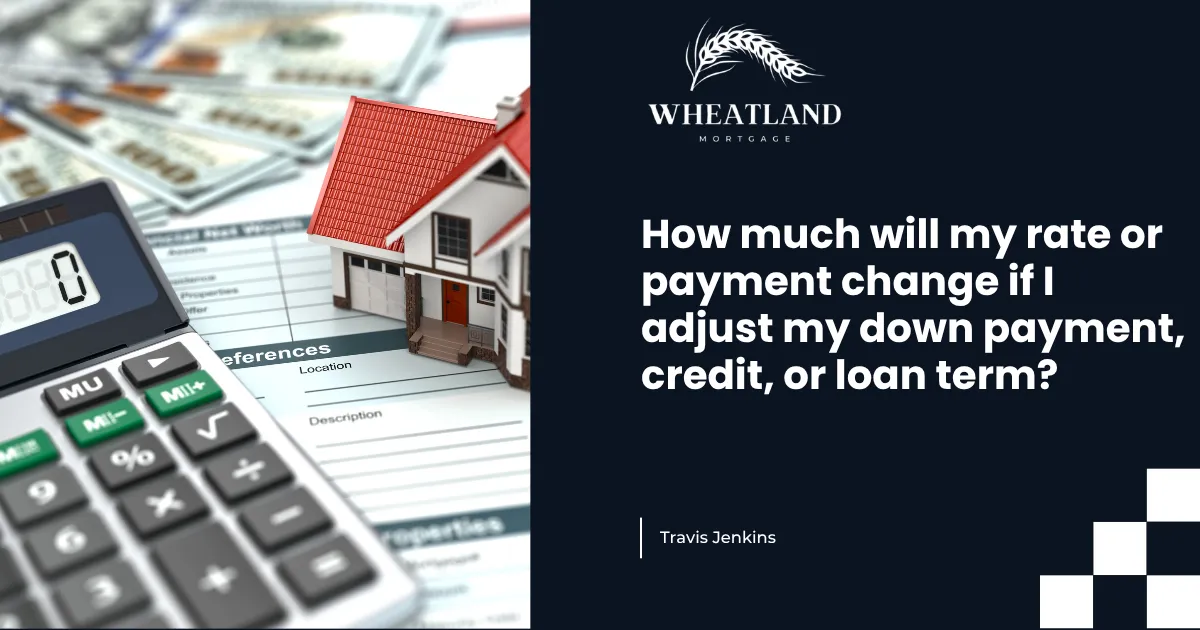
How Small Changes Can Lower Your Mortgage Rate or Payment
When it comes to getting the best mortgage deal, small changes can make a big difference. Many homebuyers focus only on rates — but your credit score, down payment, and loan term all play a major role in how much you’ll pay each month.
Here’s how each lever affects your cost, and how to use them to your advantage.
1. Credit Score: The Power of a Few Points
Your credit score is one of the strongest factors in determining your rate. A 20-point improvement could lower your interest rate enough to save thousands over the life of the loan.
For example, someone with a score of 760+ often gets a meaningfully better rate than someone in the 680-700 range.
Tip: Paying down revolving debt and keeping credit utilization below 30% can help boost your score quickly.
2. Down Payment: The More You Put Down, the Less You Pay
Increasing your down payment doesn’t just shrink your loan balance — it also reduces risk for the lender.
That can mean:
A lower interest rate
No (or reduced) private mortgage insurance (PMI)
A smaller monthly payment
Even an extra 2–3% down can meaningfully change your costs.
3. Loan Term: Shorter Loans = Lower Rates (But Higher Payments)
A 15-year loan typically comes with a lower interest rate than a 30-year one, but the monthly payment is higher.
If your income allows, this can save tens of thousands in interest over time. For example, a $400,000 loan at 6.5% for 30 years vs. 5.9% for 15 years could save you over $90,000 in total interest.
4. Comparing Scenarios Can Reveal the Sweet Spot
Most lenders now provide side-by-side comparisons showing how each adjustment — credit, down payment, term — affects your payment. Running these scenarios helps you make informed decisions and understand the trade-offs.
Bottom Line
There’s no single magic number that works for everyone — but exploring small changes can unlock meaningful savings.
Whether you’re buying your first home or refinancing, reviewing your credit, down payment options, and loan term together can help you strike the right balance between affordability and flexibility.
Sources:


